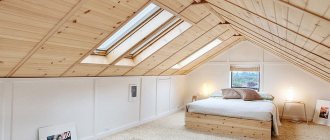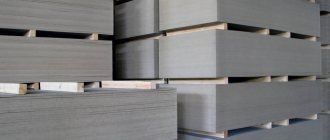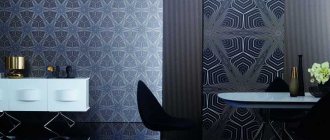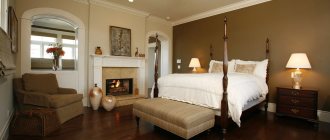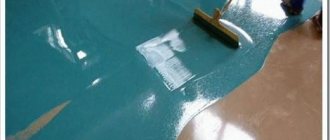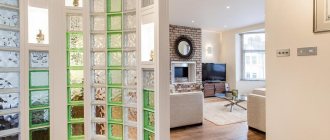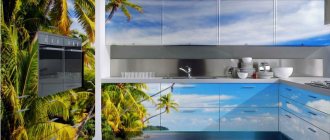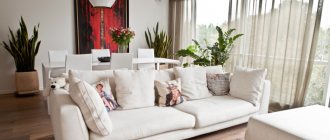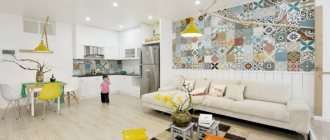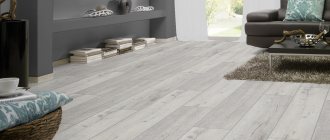What are self-leveling floors?!
Self-leveling floors are a polymer floor covering applied to the surface using the self-leveling method and without joints or seams.
There are several compositions:
- methyl methacrylate – characterized by rapid adhesion to the surface and short drying time;
- polyurethane - applicable in places with high mechanical load and negative temperatures;
- epoxy – very durable due to epoxy resins, so it is necessary to use a respirator due to toxicity at the time of application;
- cement-acrylic – resistant to high humidity;
- combined.
Regardless of the applied composition, the surface will be perfectly smooth, even mirror-like. This effect can be achieved by the physical ability of each composition to self-level.
Types of self-leveling floors
Based on the requirements, self-leveling floors can have not only different compositions, but also alternative appearances.
Often the design of a self-leveling floor is crucial, so that the result obtained corresponds to the desired one, it is necessary to understand the difference between the coatings.
Surface quality:
- matte;
- semi-matte;
- glossy;
- semi-gloss.
Design:
- monotonous;
- two-color;
- with a pattern, ornament or streaks;
- 3D.
Application area
The absence of joints and gaps explains the wide range of applications. For example, in medical institutions, where a lot of attention is paid to the cleanliness and treatment of surfaces, this is one of the most popular types of flooring.
Along with the design of premises, there is already considerable experience in using it outdoors, for covering steps and sidewalks. The self-leveling flooring system is so durable and wear-resistant that it can be used in a garage or warehouse where there is a high risk of damage.
Fire resistance and resistance to permanent damage justify its presence in shopping centers and other public places.
Tile
Ceramic tiles and porcelain tiles are not the best choice for decorating a bedroom. This is mainly due to the coldness of the coating; for it you will have to additionally purchase a carpet for the bedroom floor.
Floor coverings make it possible to create the most interesting design, make a room unique or universal, or highlight furniture or walls.
Photos of the floor in the bedroom will show the most commonly used materials and their combinations.
What to look for when choosing a mixture for self-leveling the floor?!
- For street coverings, there are special compositions that are not susceptible to changes in temperature and excessive moisture.
- One of the key values is the ability to quickly harden (set after application).
- Waterproofing properties are desirable.
- The composition should not be too glossy, as the floors will be slippery.
- The packaging indicates the approximate service life; it is better to choose the maximum permissible.
- To avoid damage during operation and careful processing, including with chemical compounds, the composition must provide high strength of the coating.
- Good technical characteristics must be accompanied by an attractive appearance.
Preference should be given to mixtures that do not require special conditions for drying, especially when it comes to outdoor use.
Solid board
Wooden floors in the bedroom are more common in private homes than in city apartments.
The material will be an excellent complement to ethno-styles and environmental design. It is distinguished by its naturalness, amazing beauty, warmth and pleasant tactile sensations.
The board will serve for a long time and can be easily repaired. It will help retain heat and become a pleasant source of coolness in hot weather, absorb excess moisture and release it into an overly dry room. Good soundproofing properties will be another advantage of a warm and comfortable floor.
But for a durable design, you need to carefully select the material and take care of its treatment against mold, bugs, and rot. And the price of the material will not please you.
Advantages and disadvantages of self-leveling floors
Like any other type of building material, they have certain characteristics that should be studied to determine whether they are suitable for use in each particular application.
Filling the finishing layer
At the final stage, a finishing layer is applied, which will help maintain the integrity of the coating and enhance the effect of a three-dimensional image. Like the previous options, it is also applied using a special technology, following the master class.
First, a transparent polymer composition is mixed, then the parts are poured onto the picture and distributed with a roller.
The thickness of this coating should not exceed 0.3 mm.
Advantages
- High wear resistance and durability of the coating;
- Insensitive to ultraviolet radiation;
- Safety;
- Lack of odors and other decomposition products when exposed to physical phenomena;
- Fire-resistant composition, does not emit toxic compounds when burning;
- Simple and quick installation;
- Aesthetic and attractive appearance;
- The variety of creative possibilities and design solutions in the photo of self-leveling floors is proof of this.
Instructions on how to fill a self-leveling floor
Leveling the floor. A level concrete screed will be required, because otherwise, much more mortar will be required, which is not profitable for financial reasons.
Base primer. It is better to use a deep penetration primer, carefully filling all holes and microcracks. To do this you will need a cloth roller. After 4 hours, repeat application and let it dry completely, this will take no more than a day.
Curtains for the kitchen - 120 real photos of new designs. Options for the ideal combination of modern curtains in the kitchen interiorHow to diversify your home interior: DIY decor and beautiful design ideas
- How to hang curtains - step-by-step instructions with photo examples and recommendations. Exclusive curtain design solutions from experienced craftswomen
We dilute the composition. In a deep container, first mix the dye and the main composition, then add the hardener and stir for a few more minutes. To avoid unwanted foam and bubbles, the drill should be at low speed.
Pour the mixture onto the floor and smooth it with a wide spatula. It is advisable to have an assistant. The composition has a maximum fluidity of only 40 minutes, so the process of diluting and pouring must be relatively quick and continuous.
Complete drying of the self-leveling floor takes at least a week, so do not rush and resort to various methods to speed up the process, as this can have a detrimental effect on the final result.
Self-leveling flooring in the interior becomes an invaluable find for the designer and the scrupulous consumer. It is ready to serve for decades and is a true decoration of both residential and commercial spaces.
Photo of a beautiful bedroom floor design
Note! Provence bedroom - 75 photos of French harmony in the bedroom interior
Let's discuss this article together:
Click to cancel reply.
